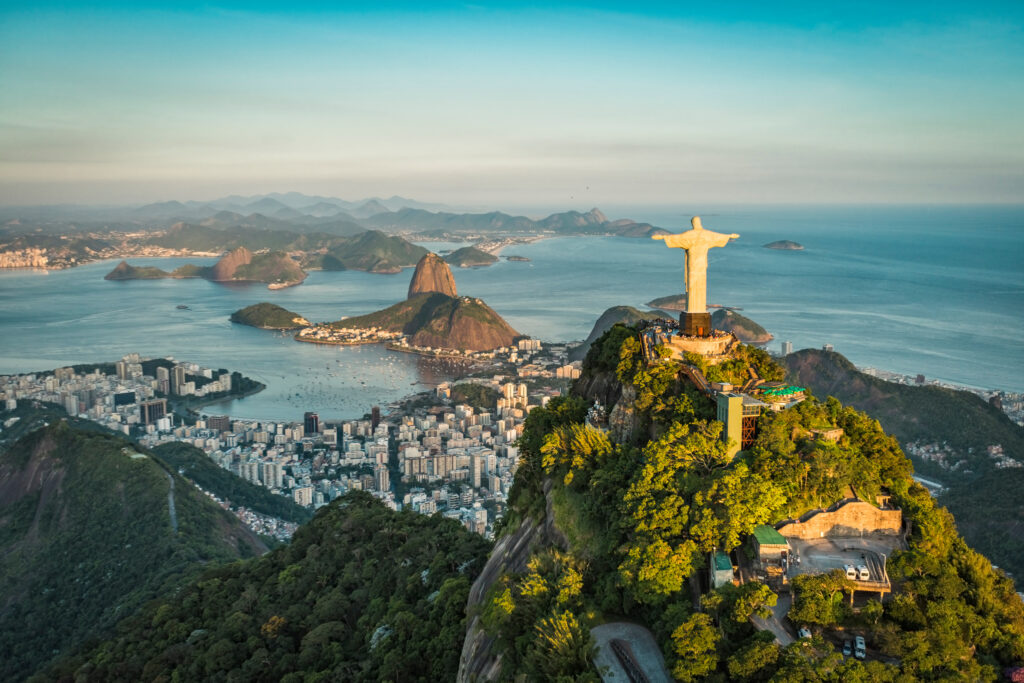
Rio de Janeiro is a unique city that never leaves indifferent those who discover it for the first time. In fact, the city has achieved the feat of bringing together the planet's most beautiful natural and urban sites in a single location! Incredible! Here, the ocean meets the world's largest urban forest, and the sky, sea, mountains and stone all come together to deliver some of the world's most colorful and festive landscapes! To experience Rio is to come into contact at least once in your life with an art of living that borders on happiness. Indeed, Brazilians like to say that "God is the artist. And Rio, his masterpiece". Are you ready to see one of the most beautiful and vibrant paintings of our time?
1. What to do in Rio de Janeiro Mosteiro de São Bento

With its thick facade and colossal dimensions, this fortress church is an excellent representation of the religious buildings constructed as places of worship and defense towers during the colonial era. Its white facade features gargoyles and turrets housing cannonballs. Yet beneath these cold, glabrous walls lies a most sumptuous interior! Cherubs watch over the Virgin of Montserrat, the architecture is exuberant and every wall is filled with leaves painted in fine gold. The solid silver chandeliers weigh 227 kg each, and above the balcony, supported by two magnificent mermaids, hides an antique German organ dating from 1773. Saint Benedict, the martyr honored in this World Heritage building, is also admirably represented. Twice a day, at 7.15 a.m. and 6 p.m., you can listen to the monastery's Benedictine monks sing Gregorian chants.
2. Climbing Christ the Redeemer

This has to be THE must-see in Rio! This listed sculpture is 31 metres high and weighs 1,145 tonnes. Created to celebrate the centenary of Brazil's independence, it was Frenchman Paul Landowski who sculpted the hands and face of the famous statue. It is unique in that it is covered with soapstone, a rock whose peculiarity is that it emerges soft from the earth and hardens on contact with air. Inside the sculpture is a small chapel dedicated to santa Aparecida, the saint of miracles. Weather permitting, you can enjoy an incredible view of Rio de Janeiro, at an altitude of 709 metres, including Guanabara Bay, the beaches of the Zona Sul, Rodrigo de Freitas Lagoon and the North Zone with the Maracanã.
To get to Christ the Redeemer, we recommend reserving your place on board the century-old electric rack train , which will take you through part of the Tijuca National Park, enjoying superb views of the city along the way.
3. Rio's Sugar Loaf
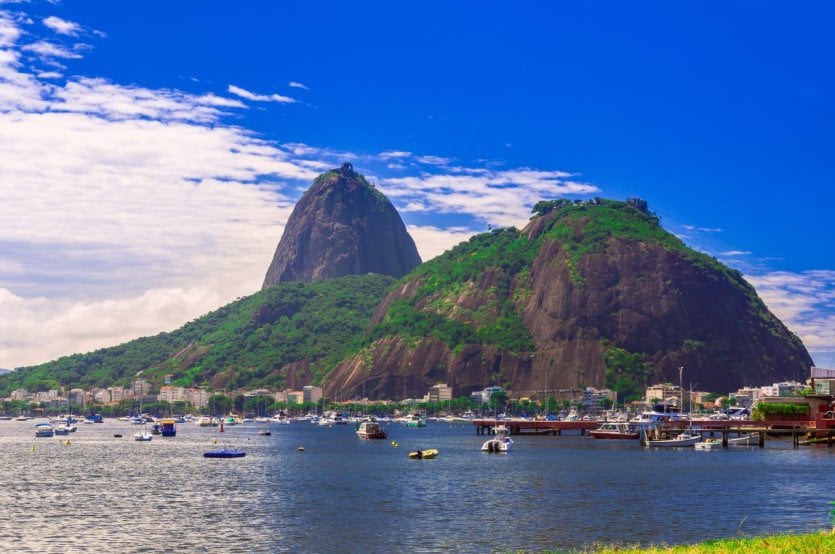
An essential walk on a 500-million-year-old block of quartz whose summit rises to 395 metres. The strange name Pain de Sucre (Sugar Loaf), Pão de Açucar in Portuguese, was inspired by the sugar molds once used to form sugar blocks. You can take the cable car to the very top (remember to book your tickets in advance right here) to enjoy breathtaking views of the city on the way up.
If you're not a cable car fan, but prefer to walk instead, you can take a hiking trail - and it's free too! In this way, you can get a glimpse of the Brazilian jungle and observe the typical macaos monkeys. Be sure to bring mosquito repellent and good shoes, as the path can be slippery!
4. What to do in Rio de Janeiro Sunbathing on Copacabana beach
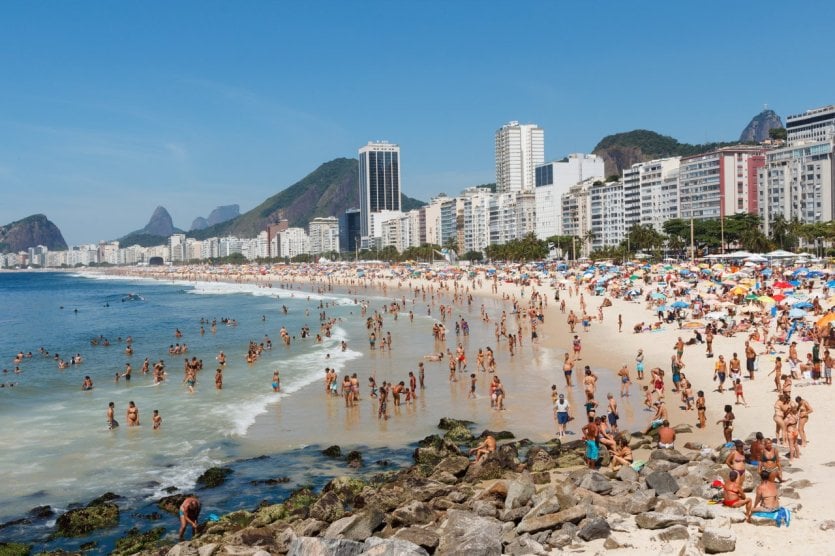
The world's most famous beach in a city where the weather is always fine, and which is also an ideal destination for honeymooners... It stretches for over 4 kilometers and is frequented by millions of cariocas. It's an unmissable spot, so much so that it's an integral part of the daily lives of Rio de Janeiro's inhabitants. Admittedly, the beach no longer holds the title of "city's most chic beach" (Ipanema stole the show), but it has a certain je-ne-sais-quoi that gives it enormous charm. During your stroll and/or swim, you may come across a bronze statue sitting on a bench. It's that of the poet Carlos Drummond, an emblematic figure in Brazilian literary culture.
5. Go to the Jardim Botânico

This green setting is considered one of the ten most important botanical gardens in the world, boasting 6,000 species of plants and trees. Its architecture is so beautiful that it is a veritable Garden of Eden, replenished by 2 rivers that flow through it: the riacho Iglesias and the rio dos Macacos. Portuguese prince Dom João VI built this earthly paradise to satisfy his personal needs, such as growing tea. Don't miss the exhibition space: Pacheco Leão's Blue House. Within this immense park, you can also visit 2 miniature gardens, one inspired by Japan, the other by Amazonia. Finally, stop by the pond to observe the magnificent Vitoria Regia, giant water lilies. You can book a guided tour of the botanical garden right here to better understand the history of Brazil in the 19th century.
6. Avenida Rio Branco
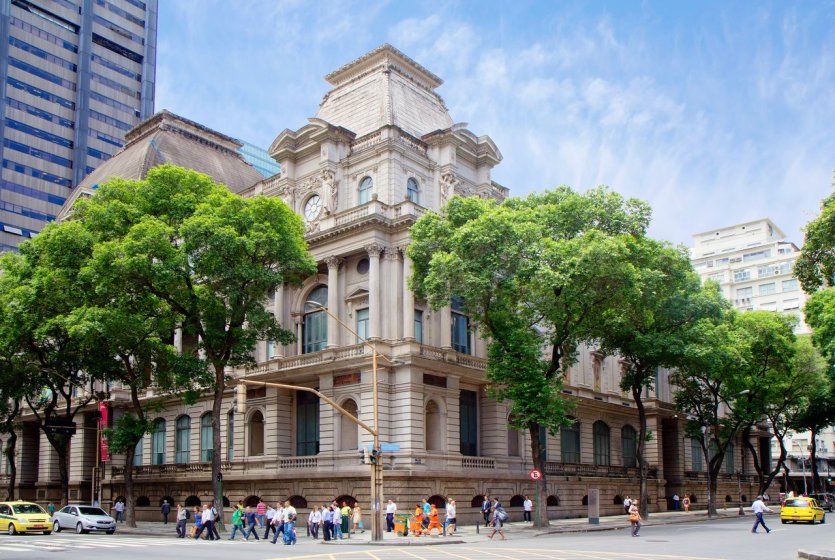
Inaugurated in 1905, this street marks a major turning point in Brazilian history. Indeed, by building this immense avenue, Brazil wanted to show that it was looking to the future. Today, only 10 of the original 119 buildings remain... And yet, it's the place to make all kinds of claims, with many buildings that can't be ignored! Here, you'll find Latin America's first skyscraper, the municipal theater and, just across the street, the Museum of Fine Arts. Although the collections are very limited, you can see key Brazilian artists such as Eliseo Visconti, Di Cavalcante and others. You can also see paintings by the French artist Taunay, who painted a large number of landscapes and urban scenes of Rio during his stay in Brazil.
7. What to do in Rio de Janeiro Visit the National Museum of Brazil
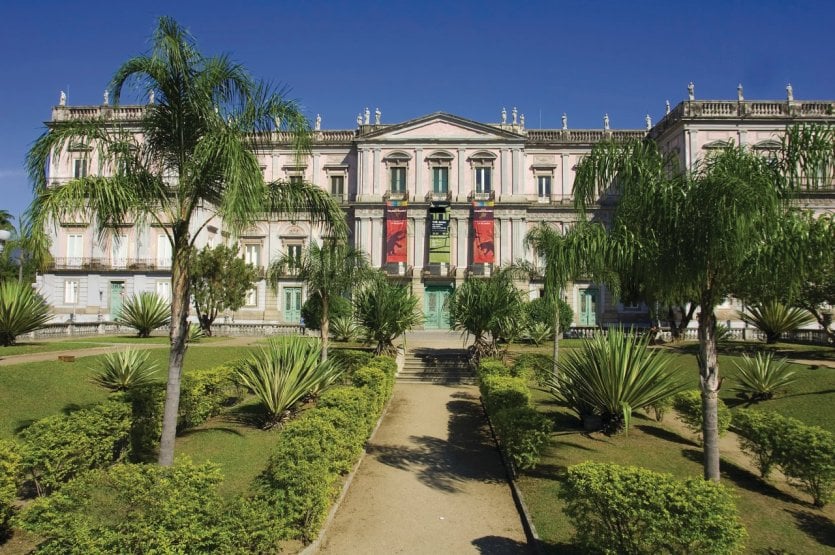
Located inside the Quinta de Boa Vista park, this museum was a gift from Portuguese merchant Elias Antônio Lopes to Prince Dom João VI in 1808. Initially a royal residence, it was also the seat of the Constituent Assembly in 1891. A year later, it became the "National Museum of Brazil". It is the country's oldest scientific institution and South America's largest museum of natural history and anthropology. Inside, the collections are literally breathtaking: prehistoric animal skeletons, Etruscan ceramics, Egyptian tombs, indigenous objects from all over the world and more. The most impressive pieces are undoubtedly the Bendego meteorite, one of the largest in the world (4.9 tonnes), and "Luzia", the oldest human skeleton discovered in South America.
8. Selarón staircase
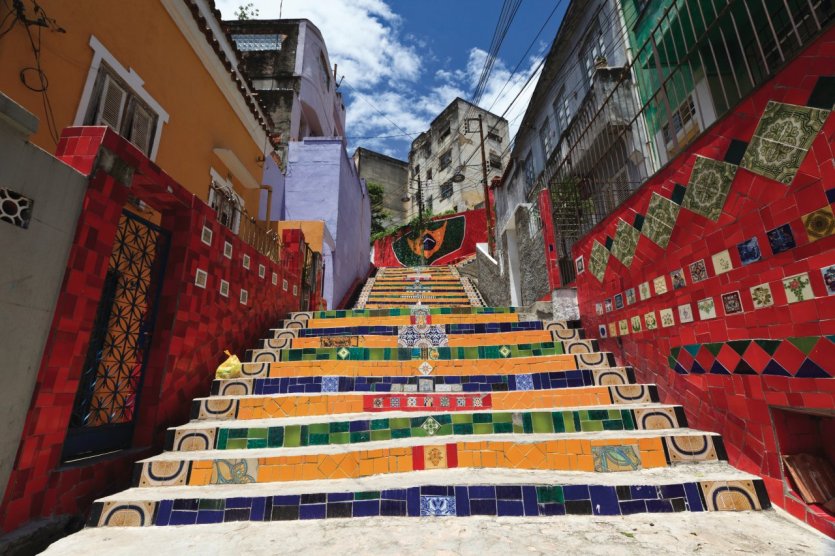
In 1990, painter Jorge Selarón embarked on the Grande Locoura (Great Madness): painting and decorating the staircases of an entire street. To realize his ambitious artistic project, he used azulejos, earthenware tiles, to line the 215 steps of a staircase. Interestingly, the tiles come from all over the world! Indeed, some people fell under the spell of this crazy project and sent material to the artist. However, some azulejos were made by the artist himself. To recognize them, look for the famous signature, a pregnant woman, which appears in all Jorge Selarón's works. Other motifs are inspired by Brazilian personalities such as artists and sportsmen. The aim of this crazy project was to pay homage to the Brazilian people, and it's quite a success! Our advice: go down the steps at the end of your visit to Santa Teresa.
9. What to do in Rio de Janeiro Visit the Museum of Tomorrow
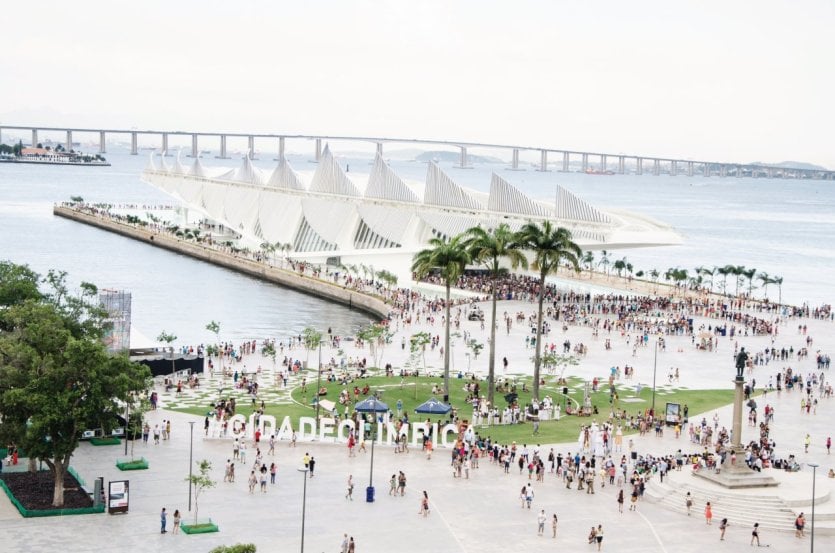
The latest jewel to be created in Rio: the Museum of Tomorrow. Futuristic in its architecture, this white building has a surface area of 15,000 m² and is inspired by the shape of a bromeliad, a flower from the Mata Atlântica forest. Focusing primarily on our planet's ecological problems, the museum is powered 100% by green energy! Solar energy and seawater are used to supply the building's every need. Inside, art and science come together. Here, humanity is questioned about climate upheavals and their impact from a scientific, social and ecological point of view. Tomorrow's world is presented with a multitude of digital and interactive tools, giving this adventure into the future a playful and engaging edge.
10. The mythical Rio Carnival

How can you think of Rio without mentioning its spectacular Carnival? It's undoubtedly the favorite festival of all Brazilians, especially Cariocas, who take to the streets to dance the night away. The whole city is set ablaze to the sound of the mythical Janeiro samba! For 5 days, the greatest samba schools parade to become "Queen of Carnival". The costumes worn by the baianas, all feathers, rhinestones and sequins, are a sight to behold. If you're planning a Brazilian getaway around this time (often in February)... we envy you, because Rio really is a wonderful city at carnival time.
11. What to do in Rio de Janeiro? Visit the Tijuca National Park
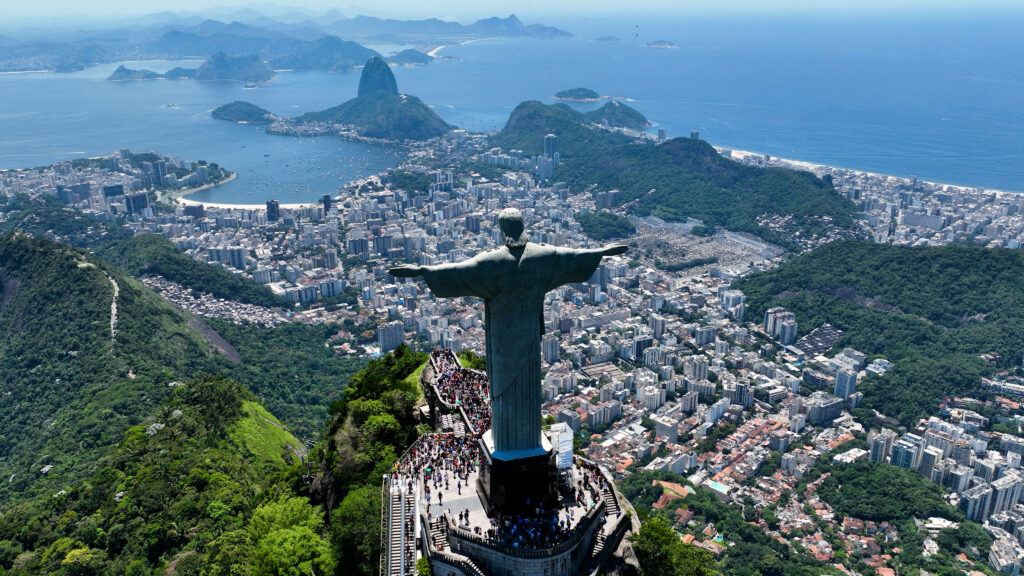
It's one of the world's most mysterious forests: Rio de Janeiro is the only city in the world to have a tropical forest within its borders. The Tijuca forest encircles the city with its lush fauna. It plays a fundamental role in the lives of Cariocas: it reduces pollution and flooding, and is also the city's main source of water. A walk through the forest will reveal exceptional sites such as the Cascatinha waterfall and, above all, a wealth of wildlife. It's not uncommon to spot toucans, sago monkeys or even howler monkeys. If you'd like to make the most of it, we recommend you book your guided hike to Tijuca Peak here.
12. The chic beach of Ipanema
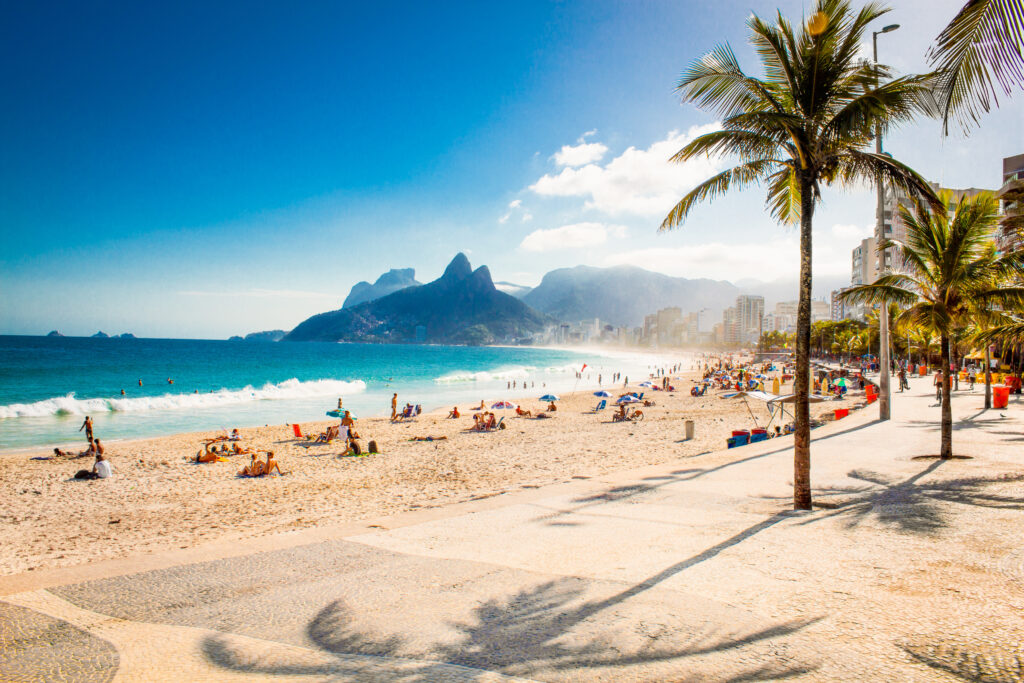
Right next to the famous Copacabana is its little sister: Ipanema. Located in a chic, trendy district, this beach invites you to laze around with an acai ice cream in hand. The many beach-goers will be happy to offer you a taste of this succulent fruit from the Amazon, which is still rarely sold in Europe. In the evening, at dusk, the view is breathtaking. The sun sets between the twin "Dois Irmãos" mountains, leaving bathers so enchanted that it's not uncommon for some to applaud.
13. What to do in Rio de Janeiro Party in the festive Lapa district
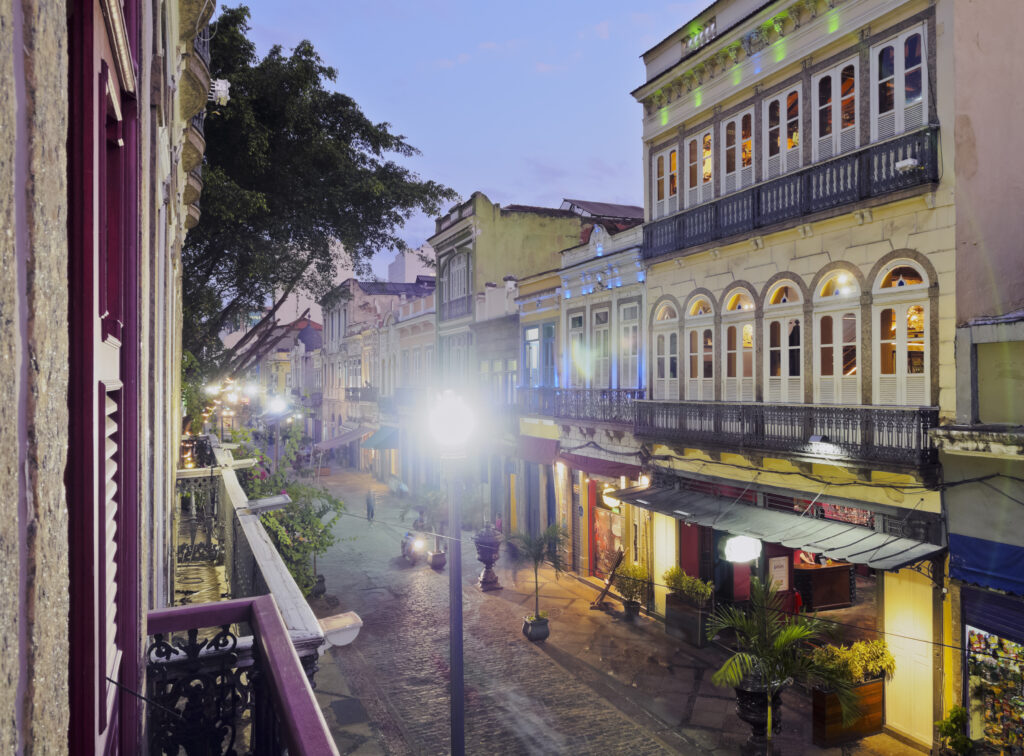
The Lapa district is certainly the most authentic in Rio. With its cobbled streets, narrow houses and aqueduct over which the picturesque Carioca streetcar passes, it's a reflection of Brazilian culture: lively and colorful. In fact, this is where the nights are at their wildest. Lapa is the center of nightlife, with bars and discotheques bursting into life every weekend to the sound of samba and choro.
14. Stroll through the historic district of Santa Teresa
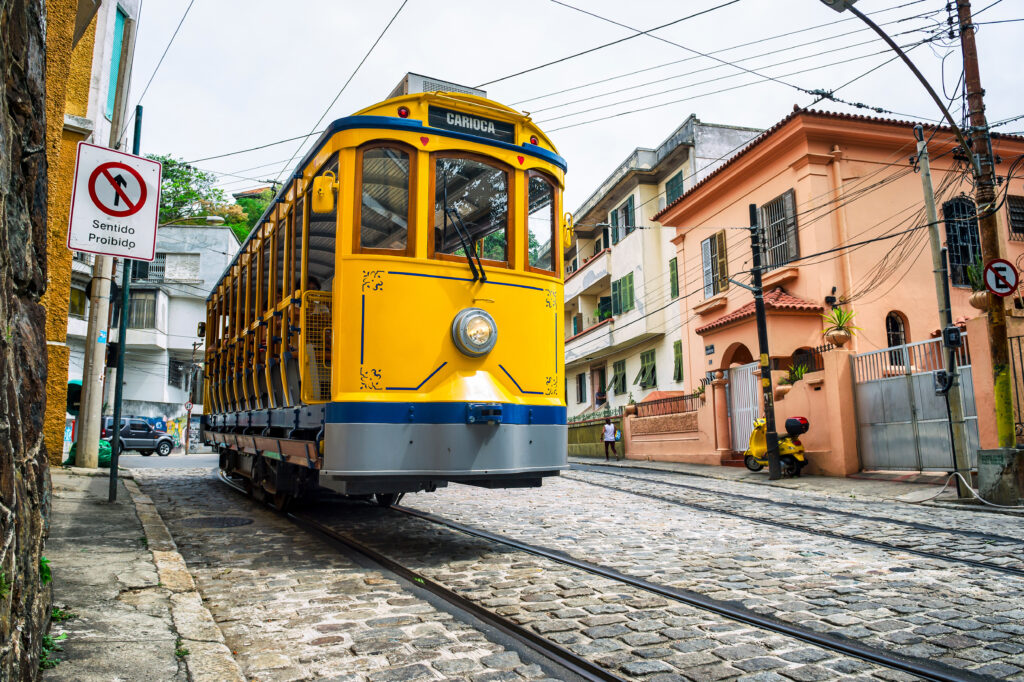
Rio's famous tramway is known as the bonde (or bondinho). Now there's just one, which runs between Centro and Santa Teresa and back, over the old Arcos da Lapa aqueduct. This retro-yellow wagon up and down the morro doesn't go unnoticed on the district's main street. This is the most pleasant way to get to Santa Teresa during the day to discover the Santa Teresa hill district, where the old 19th-century mansions and bohemian spirit offer a very different touch of the cidade maravilhosa.
Click here to book your guided tour of historic Rio and the Santa Teresa district!
15. What to do in Rio de Janeiro Visit the National Library of Rio de Janeiro

Beyond its neo-Gothic architecture and the fact that it was built by Portuguese immigrants, Rio de Janeiro's National Library boasts Art Nouveau decorations, stained glass windows, banisters and statues. It is one of the largest libraries on the American continent, housing almost 9 million documents. It boasts the largest Portuguese-language collection outside Europe. It's undoubtedly a cultural landmark not to be missed on a trip to the famous Brazilian city, especially as it's one of our Top 10 most beautiful libraries in the world.
16. Explore the Barra da Tijuca district
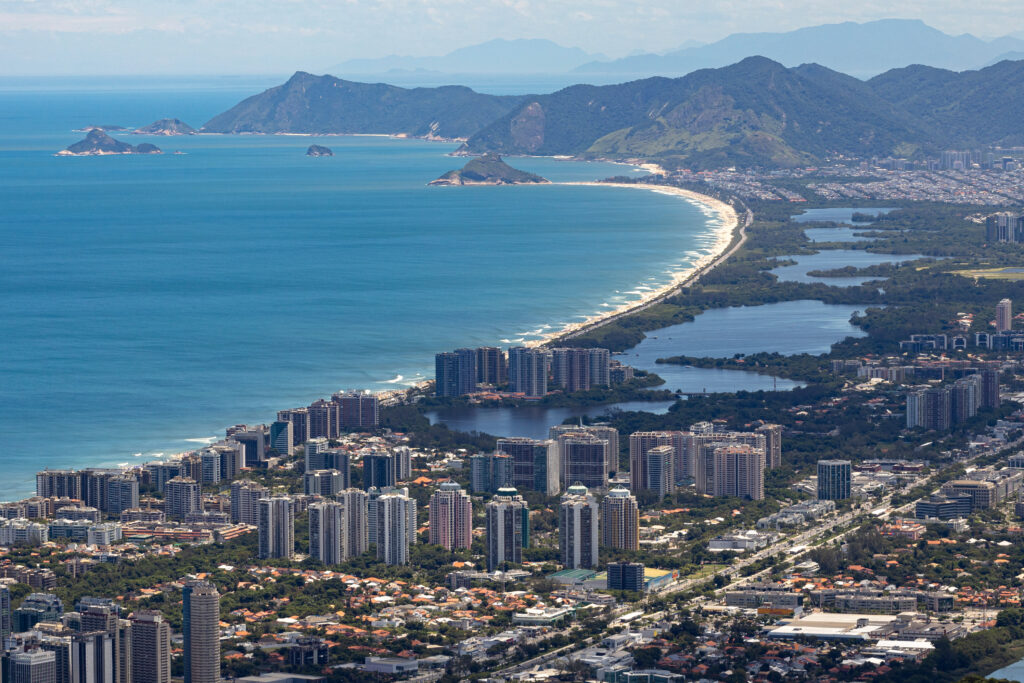
Barra da Tijucà is an off-center residential district of Rio. At 18 km long, it's also Rio's longest beach. The water is much cleaner than at Copacabana or Ipanema. The beginning of the beach is called Pepê, the trendiest and densest part. You'll find a good surf (and kite-surf) spot here too. Further south, Reserva beach, opposite the "ecological reserve" separating Barra from the Recreio district, is wilder and less populated. At the very end of Barra, Recreio beach, with its rocky promontory, is very popular with families.
17. What to do in Rio de Janeiro Attend a samba show
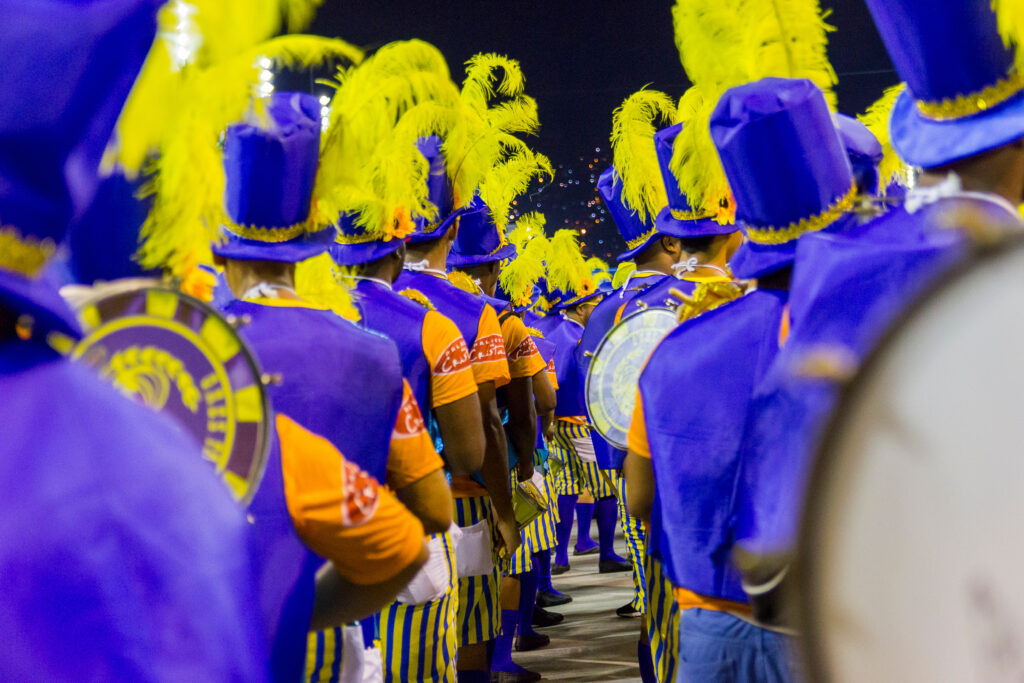
Attending a samba show in Rio de Janeiro offers an authentic and immersive cultural experience in the vibrant heart of Carioca culture. Samba is deeply rooted in Rio's history and identity, and attending a samba show will allow you to discover this fascinating tradition in its original context. Admire the virtuosity of the dancers, the intoxicating synchronization of the percussion and the liveliness of the colorful costumes. Feel the contagious energy of the music and dance, and immerse yourself in the warm, festive atmosphere of the city!
18. Climb to the top of Pedra da Gavea
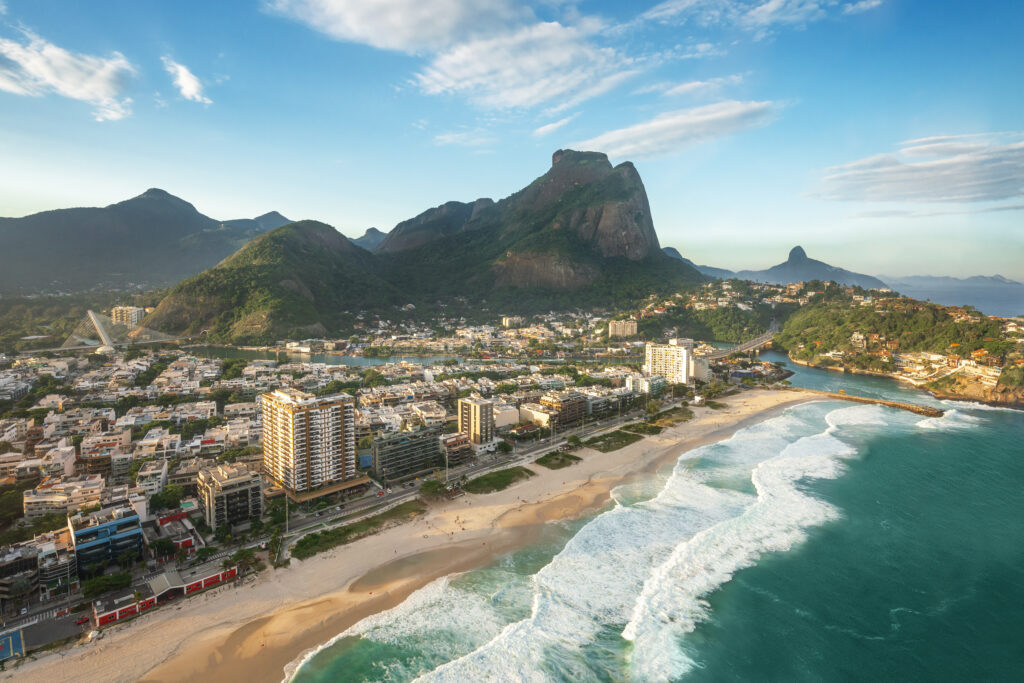
Climbing to the top of Pedra da Gavea is a wonderful hike to make in Rio de Janeiro. Once you've reached the top, at an altitude of 800 m, you'll enjoyspectacular panoramic views over Ipanema, Leblon, São Conrado and Barra de Tijuca. Please note, however, that the hike is quite difficult due to the height difference, the heat and some tricky sections. But it's still doable (unless you're afraid of heights or are in poor physical condition.) We recommend that you allow a full day for this hike, and above all, that you book a guide here .
Good to know for the more adventurous: Pedra da Gavea is also the only paragliding launch point in the area.
19. What to do in Rio de Janeiro Taste Brazil's culinary specialties

Among the must-try dishes are feijoada, a black bean stew with a variety of meats, such as pork and sausage, served with rice and vegetables. Churrascarias, or grilled meat restaurants, offer a unique gastronomic experience where you can sample a multitude of spit-roasted meats. Tropical fruits such as açaí, guava and coconut are also must-tries in Rio, and can be enjoyed as fresh juices or refreshing desserts.
Where to stay in Rio de Janeiro?
Rio de Janeiro offers a diverse range of accommodation options for visitors, from luxury hotels to budget hostels. Famous for its iconic beach, Copacabana offers a multitude of hotels, self-catering apartments and guesthouses with breathtaking views of the Atlantic Ocean. Considered one of Rio's most exclusive neighborhoods, Leblon offers luxury accommodation, as well as upscale restaurants and bars. If you prefer to be at the heart of Rio's cultural and historical action, downtown offers more affordable hotels and easy access to sights such as the Municipal Theater and the Museum of Modern Art.
Here are our three favorite accommodations in Rio de Janeiro!
Ideally located opposite the Copacabana fort, this is undoubtedly one of the best hotels in Rio de Janeiro: it boasts the finest view of the legendary beach. You can enjoy breakfast on the terrace with a superb view of Copacabana and the Sugar Loaf, and make the most of the two swimming pools, one for the morning sun, the other for the afternoon. Are you tempted? Click here to book your room in just a few clicks!
- Best value for money: Rio Forest Hostel
Housed in a superb turn-of-the-century mansion, the Rio Forest Hostel is an exceptional hostel in Santa Teresa that you can book right here . It boasts panoramic views over Guanabara Bay from its many balconies, and the prices are very reasonable.
- The most beautiful, ideal for a honeymoon: Les Jardins de Rio
A heavenly stay awaits you at Les Jardins de Rio: rooms, pool, gardens, everything is of the highest refinement. Located in Cosme Velho, a quiet, pleasant district next to the Marinho Foundation and close to the beaches, this hotel with its warm, modernist style will be an enchanted interlude! Tempted? Check rates and availabilityhere !
What to see in Rio de Janeiro in 5 days?
During a five-day stay in Rio de Janeiro, in March for example, it's possible to discover several of the city's emblematic sites. Here's a suggested itinerary:
Day 1: Start by visiting the famous Christ the Redeemer, located at the top of Corcovado. Enjoy panoramic views of the city from this iconic Rio landmark. Next, explore the historic Santa Teresa district, known for its cobblestone streets, colorful houses and bohemian ambience.
Day 2: Head to Sugarloaf Mountain, where you can take the cable car to the top for spectacular views of Guanabara Bay, the beaches and the city. Afterwards, relax on the world-famous beaches of Copacabana and Ipanema.
Day 3: Explore the Lapa district, renowned for its lively nightlife and famous Selaron staircases, covered in colorful tiles. Also visit the downtown district to discover historic sites such as the Municipal Theater and the Imperial Palace.
Day 4: Take a trip tothe Tijuca Forest, the world's largest urban forest. Here you can hike, bike or simply enjoy the lush natural surroundings. Afterwards, visit the Rio de Janeiro Botanical Gardens, home to a wide variety of tropical plants.
Day 5: Conclude your stay by taking time to soak up the atmosphere of Leblon beach and stroll around the surrounding neighborhood. Next, explore the Barra da Tijuca district, renowned for its quieter beaches and modern shopping malls.
This itinerary will allow you to discover some of Rio de Janeiro's main attractions, while also leaving you time to relax and explore the city at your own pace.
What to do in Rio de Janeiro when it rains?
When it's raining in Rio de Janeiro, there are a number of things you can do to enjoy the city in spite of the weather:
- Visit museums: Rio de Janeiro is home to several interesting museums, such as the Museum of Modern Art (MAM), the National Museum of Fine Arts and the National Historical Museum. These are perfect places to take refuge and discover Brazilian history, art and culture.
- Discover the cultural centers: Rio de Janeiro has many cultural centers offering exhibitions, film screenings, concerts and other cultural events. The Banco do Brasil Cultural Center (CCBB) and the Caixa Cultural Center are two popular examples.
- Enjoy a coffee in a historic café: Rio is full of historic cafés and patisseries where you can relax with a hot drink and dessert while admiring the architecture and watching the people go by.
- Attend a samba or capoeira show: Many venues in Rio offer samba and capoeira shows, which are essential elements of Brazilian culture. This is an excellent opportunity to enjoy an authentic experience, even on a rainy day.
Tempted by a vacation in Rio de Janeiro? Take advantage of a discount by booking your travel insurance here, and leave with peace of mind!


